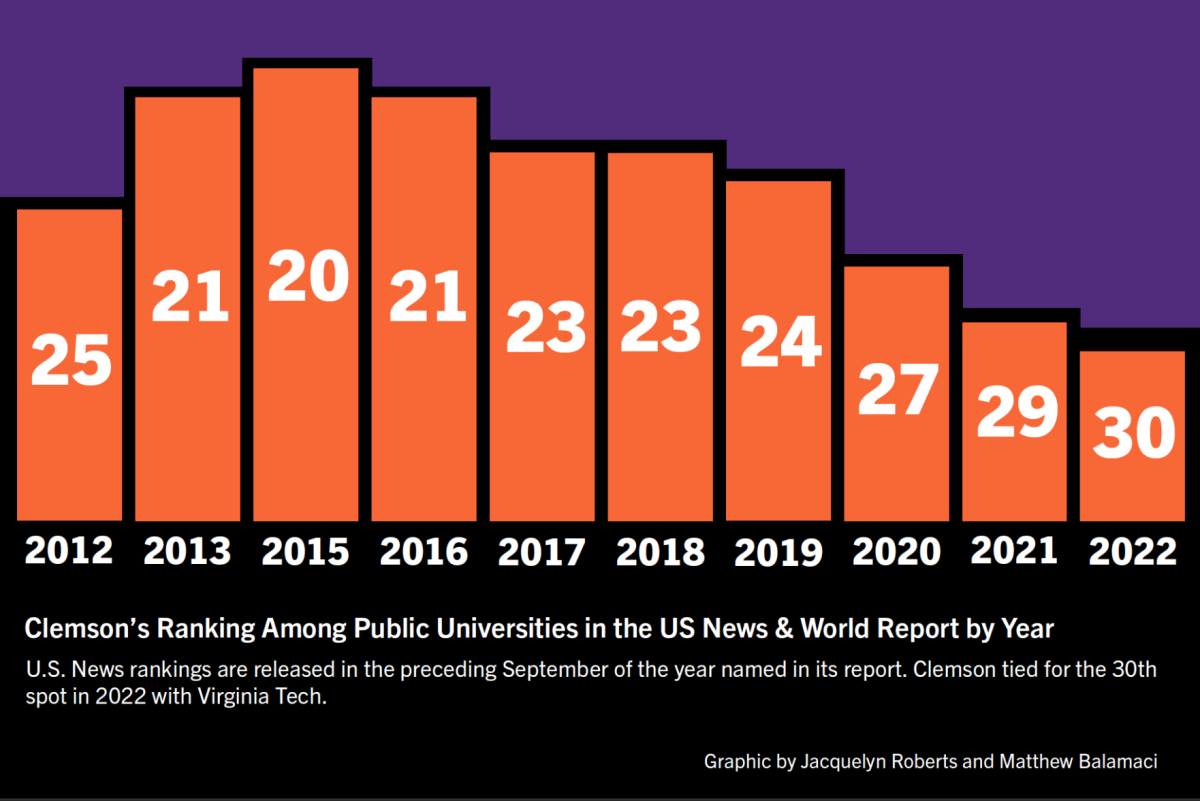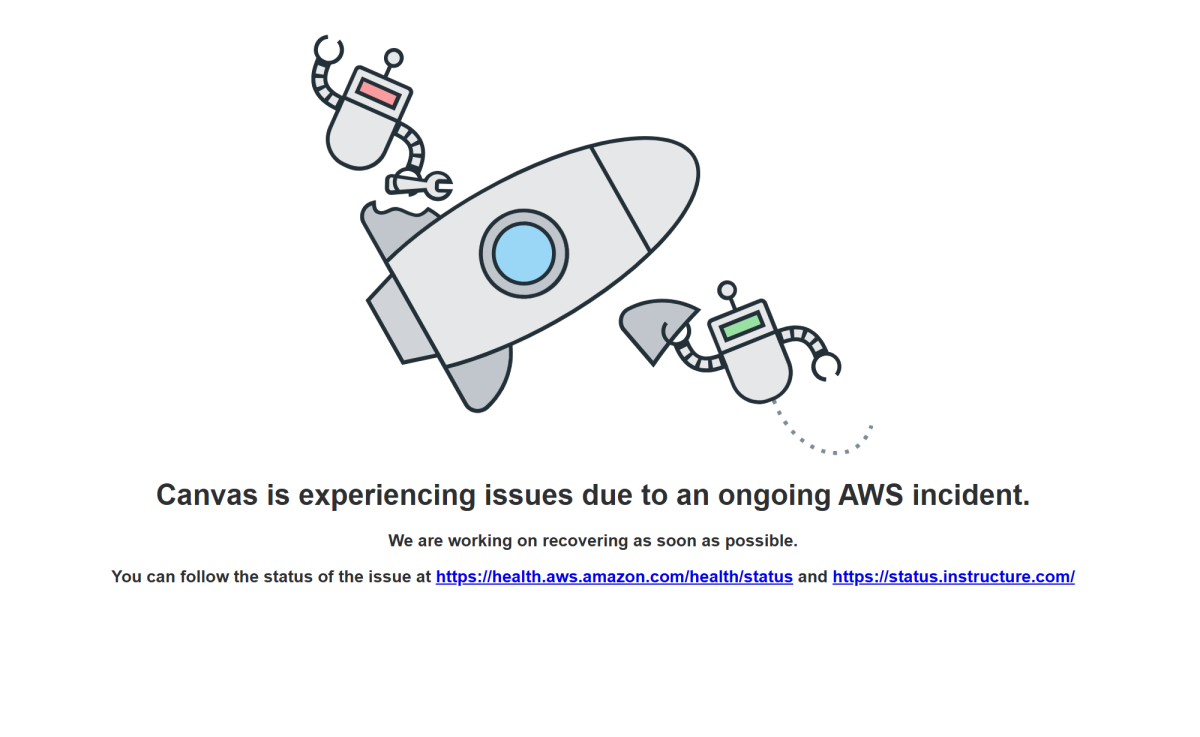U.S. News & World Report issued its top college rankings last fall, in which Clemson University once again lost ground.
The University landed in a tie with Virginia Tech for the 30th spot in the rankings of top public universities, down from 29th in 2021. This marked the seventh consecutive year in which Clemson has either maintained or fallen on the list, and the third consecutive year the University has placed outside of the top 25.
The steady decline directly contrasts with a fundamental building block the 10-year strategic plan, Clemson Forward, implemented in 2016.
“The plan aims to ensure that Clemson fulfills its core mission and consistently ranks among the nation’s top 20 public universities,” reads the University’s strategic plan.
Clemson launched its quest to achieve top 20 status under the leadership of former University President James Barker. At the time, the University held the position of No. 38 but reached the top 25 by 2008 with its peak at the 20th spot in 2015.
What has caused the campus to fall from its ranking of 20 in 2015, to 30 in 2022? It’s a complicated subject, but part of the answer may be found in changes made to the U.S. News methodology in recent years.
For the second time in three years, the publication has shifted the weighted metrics used to calculate the rankings. The publication uses 17 key measures of academic quality, specifically broken down into six classifications: outcome (40%), faculty resources (20%), expert opinion (20%), financial resources (10%), student excellence (7%) and annual giving (3%).
Social mobility, listed under outcomes, which measures Pell Grant graduation rates and Pell Grant graduation rate performance, was introduced to the ranking metrics in 2020. This continues to be an area of struggle for Clemson. The University ranks 365th out of 381 schools, falling an additional 17 spots over the past two years.
For comparison, Clemson ranks 28th in alumni giving, a metric that has decreased in weighted importance, dropping from 5% to 3% in this year’s rankings scale. The school also struggles to compete in faculty resources, specifically faculty compensation and financial resources.
For years, Clemson kept many class sizes capped at 19 students because U.S. News tracks the percentage of classes under 20. Class size accounts for eight percent of a school’s ranking.
In the 2021-2022 academic year, some Clemson departments were forced to raise many classes above the 19-student cap due to a pandemic hiring freeze, according to department chairs and other sources. However, the recent jump in class sizes does not appear to be a factor in Clemson’s drop in rankings because U.S. News calculates class sizes based on a two-year average for the previous fall semesters.
Clemson had 37.7% of its classes below 20 students in the 2022 rankings. The vast majority of schools in the top 20 have substantially more classes under 20, but Clemson performed better on class sizes than six schools with higher rankings.
Clemson remains the top-ranked public institution in South Carolina in the latest rankings. Its undergraduate programs in engineering, business, computer science and nursing ranked among the top schools in the nation. The campus ranked 16th in co-ops/internships. The University also retained its R1 designation of “Doctoral Universities – High Research Activity,” awarded annually by the Carnegie Classification of Institutions of Higher Education.
University Relations referred official inquiries to the office of the Provost. The Provost’s office did not respond by press time.
Why Clemson keeps falling in the U.S. News rankings
Jerel Hendricks, Contributor
April 28, 2022
Courtesy of Jacquelyn Roberts and Matthew Balamaci
Clemson University has shown a steady decline for the past four years in ranking among public schools.
1
0
Donate to The Tiger
Your donation will support the student journalists of Clemson University. Your contribution will allow us to purchase equipment and cover our annual website hosting costs.
More to Discover
















J Thomas • Oct 9, 2023 at 3:28 pm
Number 43th among state schools and 86th overall now … Do the university leaders care at all? Our reputation is plummeting fast.